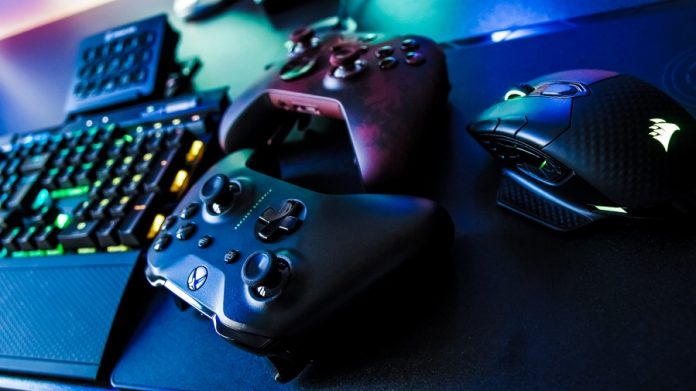Recently I stumbled upon a series of studies done by SuperData and found it very interesting and wanted to dive deeper into what the numbers mean.
Tencent’s dominance
From the list of top 10 free-to-play mobile and PC games by revenue, Tencent stands out as a publisher that has more than one top 10 title - three to be exact. Honour of Kings (including Arena of Valor), League of Legends, and Game for Peace, brought in a total of US$ 4.3 billion. This just shows how massive Tencent is as a company, and the sheer amount of money they are bringing in from just their games. From the same study in 2017, according to the top 10 free-to-play PC games by revenue list, Tencent’s dominance just blows their competition out of the water. League of legends, Dungeon Fighter Online, CrossFire, Blade and Soul, and Fifa Online 3, all published by, or in partnership with Tencent, raking in an eye watering US$ 5.78 billion dollars, from just their PC games alone!
Asia dominates free-to-play and mobile game revenue.
Asia, especially East-Asia seems to shun the premium PC and console games, where North America and Europe has a comfortable lead. Asia’s genre of choice? Free-to-play and mobile games.
On finding out why there was such a stark contrast, why Asia largely gravitated towards mobile and free-to-play games, one reason became apparent - Casual games just have such a large appeal in Asia.
As of 2019, the mobile phone ownership rate in Asia was 62.27%, which was a lot larger than its desktop ownership rates at 35.81%, according to a StatCounter, web traffic analysis service provider. Compared to North America and Europe, mobile phone ownership rates were 51.07% for the former and 50.39% for the latter, and desktop ownership rates of 44.74% for the former, and 45.55%.
It is not that Asia does not spend on games, which on the surface seems so, with their fascination in free-to-play games, and mobile games, which are also mostly free-to-play. Asia is one of the largest spenders on these platforms with in-app purchases. The Philippines are the third-fastest growing market in consumer spending on the Google Play store.
“They are very sophisticated gamers. If you save them time, where buying an item will save them time by the week, then everybody is going to throw money at it,” noted Jonathan Sze, founder of CloudMoolah, a payment aggregator, when he was speaking at Unite Europe 2017.
XR games are here to stay
To a lot of people, XR is just a gimmick. A person playing XR games just looks like someone aimlessly jabbing about with their oddly-shaped controllers, isolated within their headsets. However, revenue proves otherwise, that XR games are here to stay. XR games revenue was US$ 1.9 billion in 2018, and grew to US$ 2.2 billion in 2019.
Growth in 2019 was mostly due to the success of Pokemon GO, and the release of the Oculus Quest, which changes how VR is played and developed. Games like Superhot VR and Beat Sabre, are more enjoyable on the wireless Oculus Quest.
Apple has also done a lot in the past few years to champion the push for AR on their devices, with the inclusion of LiDAR scanners, essentially radar but with low energy lasers, and depth sensing systems on their 2020 11-inch and 12.9-inch iPad Pro models. Paired with their ARKit API, these additional scanners make AR tracking and scanning more accurate, providing a generally more pleasing experience. Games like Minecraft Earth and Pokemon GO are stellar examples of AR games going mainstream, games aside, IKEA place and Apple’s own measurement app are an ingenious execution of AR apps, and caused a stir when they were first released.
Twitch’s waning dominance
Twitch.tv is a popular streaming site where people go to watch others play their favourite games mostly, and sometimes some art and music creation. In this time of a viral crisis, many companies and events have taken their live shows online. Insomniac events, a popular electronic dance music event organiser, broadcasted their popular Beyond Wonderland 2020 music festival online on Twitch, free for everyone to stream. People like Deadmau5 are streaming their music creation process online live regularly.
There has always been a struggle to snatch Gaming Video Content (GVC) market share away from Twitch between major players like Youtube and Facebook. Youtube already has a strong user base for its video hosting service, while Facebook, being a social media platform, naturally compliments live streaming and video sharing as a service. In 2017, Twitch earned US$ 1.7 billion, 54% of total GVC revenue of US$ 3.2 billion, with Youtube taking home US$ 0.7 billion, at 22% of total revenue. However in 2019, Twitch took only US$ 1.49 billion, 23% of the total revenue, which saw more than a 100% increase, at US$ 6.5 billion. Youtube took US$ 1.43 billion, 22% of total, while other platforms collectively dominated, taking the lion’s share at 46%. Around 2017, huge controversies surrounding Youtube regarding uncensored, offensive content, drove large, influential advertisers away from Youtube. In response to that, Youtube implemented an algorithm that demonitizes these advertiser-unfriendly videos, but also taking down a lot of inoffensive content. Youtube faced major public backlash from creators and viewers. For a lot of creators, Youtube ad revenue makes up the bulk of their monthly income, severing that drives these content creators away and on to more supportive platforms. Huge news broke out in 2019 when popular streamers Ninja and Shroud signed exclusivity deals with Mixer, an alternative to Twitch owned by Microsoft, bringing along with them millions of their fan base, while CouRageJD and Disguised Toast went to YouTube and Facebook, respectively. Exclusivity deals can be a huge source of income for streamers that mostly rely on paid subscribers, donations, sponsors, and ad revenue for income. These deals bring traffic to smaller, less dominant websites, while opening up another revenue stream for streamers, a win-win for both parties. And because of that, we should see more exclusivity deals being secured between streamers, diversifying the live streaming space.
Links:
https://www.gamesindustry.biz/articles/2017-06-29-southeast-asia-mobiles-misunderstood-market
https://gs.statcounter.com/platform-market-share/desktop-mobile-tablet/
https://direc.ircg.ir/wp-content/uploads/2020/01/SuperData2019YearinReview.pdf

